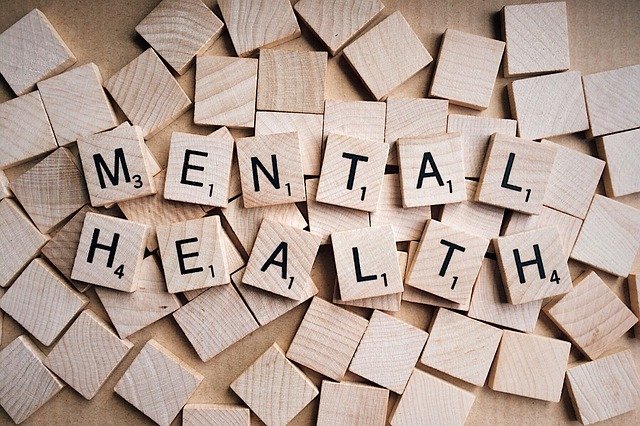
Engaging in exercises can improve an individual’s mental health and boost their mood. What happens when we move our bodies during workouts is we increase the quantity of two of the hormones (enkephalins and endorphins) produced by the body, making us feel better.
Nevertheless, participating in sporting activities does not make athletes entirely immune to mental health challenges. The truth is – being an athlete could be more challenging for an individual’s mental health. This challenge could be attributed to the nature of sporting competitions and the pressures to perform in games. It becomes worse when these athletes get hurt, even though their injuries are invisible.
Data reveals that among professional athletes, about 35% of elite athletes suffer from at least a mental health crisis, which could either manifest as eating disorders, stress, binge drinking, depression, menstrual dysfunction, burnout, and performance anxiety. The scariest thing is that the personality traits that enhance these athletes’ success and their health and well-being also have the probability of influencing their mental health disorders negatively. This reality has, therefore, led to more attention being given to the issue of Athlete’s mental health in the sports medicine community.
You need to know that the relationship between athletic culture (such as performance, coaching culture, socioeconomic status, etc.) and the athlete’s personality traits (such as pessimism, perfectionism, introversion, etc.) is interactive and fluid. This interactive relationship between personality characteristics and the athletic culture reflects changes in various athletes’ culture and developmental patterns at the time of their participation in sporting activities. However, this relationship has both positive and negative influences on the team or sport environment and the individual athlete’s performance. For instance, if an athlete has a perfectionistic trait, the athlete may have issues about his or her performance in a contest and anxiety during a physical appearance in the athletic environment.
The following are personality/environmental issues which affect athletes and their mental health:
- Personality issues: In sport, there is no consensus about whether an “athletic personality” that is conducive to failure or success exists. One undeniable fact is that some athletes generally show more positive personality traits than some other athletes. This reality is because no single personality profile has been guaranteed as a reliable personality for athletes to predict their failure or success. For example, we observed more conscientiousness and autonomy with individual-sport athletes than team-sport athletes. Inversely, the latter score higher on agreeableness, and they depend on others for individual satisfaction.
Studies have also shown that athletes who compete in professional categories have higher sensation-seeking tendencies and self-esteem than athletes who compete in lesser categories. This means that athletes who fall into the lower rungs are more likely to face factors that could impede their performance, such as social anxiety, depression, and negative physical symptoms. Furthermore, an athlete’s identity is the rate at which athletes view themselves within the athletic role, and they usually look to other people for confirmation of that position. While high athletic identity is associated with adverse outcomes like the use of performance-enhancing drugs and overtraining, it is also associated with positive effects like better athletic performance.
- Sexuality and Gender issues: Discrimination as per sexuality and gender has adverse effects on athletes such as
- Lack of concentration
- Declining performance
- Excessive training to cope with the pressure.
- Unexplained injuries, and
- Early dropouts
Discrimination along this could be against sexual minorities or members of the LGBTQ community. Sexual minority athletes face psychological issues and are often associated with the anxiety of stepping out of their house, the fear of moving freely with others, and being ridiculed by their fellow teammates. They have thus become victims of homophobic and negative attitudes of sporting fans and other athletes. The 2012 Campus Pride Report Score Card of the National Collegiate Athletic Association (NCAA) revealed that 4.6% of student-athletes were either lesbian, gay, bisexual, or queer comparison with 6.2% of college students. Many of these athletes are often at the risk of being outed should their coaches discover their identity, which poses a threat to their mental health.
- Hazing: Hazing is any dangerous or non-repetitive activity expected of a student to become a member of a group. These actions almost always result in mental discomfort and embarrassment. There is a greater risk of hazing associated with things like failure or refusal to recognize the coaching staff’s authority, a locker room or an unsupervised team area, and an imbalance of power that is shifted toward masculine authority. A study revealed that 74% of student-athletes experienced a minimum of one form of hazing while in college. This result means that out of 380,000 student-athletes, 280,000 were potential victims of hazing in college athletics.
Moreover, hazing increases based on the individual’s age, as 25% of high school-athletes claimed that their first incident happened before they reached age 13. While the degree of hazing in sporting activities ranged from 5% to 17.4% in middle schools, the rate ranged from 17.4% to 48% at the high school levels. The strange thing about hazing is that it is hardly reported, as 60% to 95% of college athletes who were previously victims do not report this incident. We can attribute this to the fear of retribution, allegiance to fellow teammates, victim-blaming, positive perception of the behavior, uncertainty of trust with authority, etc. Generally, an increase in hazing causes a decrease in team bonding, attraction, and closeness by athletes.
- Bullying: Bullying is considered the “abuse and mistreatment of someone vulnerable by someone stronger, more powerful” who could either be a coach or teammate. Bullying comes in various forms, such as yelling, intimidating an athlete using body language, or trying to overpower someone physically. Sometimes, a coach could make an athlete feel overly overrated, despised, worthless, or inadequate. Cyberbullying is a form of bullying. A 2017 NCAA study of student Athletes Social Environment claim that 12% of male and 4% of female student-athletes asserted that they received threatening messages from their fans through social media.










